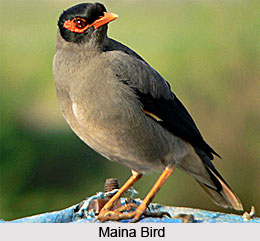 Means to Injure an Enemy, as mentioned in chapter I of Book XIV in Arthashastra, includes a number of measures which the conqueror can impose on the wicked in order to secure all the four castes of a community. It mentions, through the instrumentality of such men or women of Mlechchha class as can put on disguises appropriate to different countries, arts, or professions, or as can put on the appearance of a hump-backed, dwarfish, or short-sized person, or of a dumb, deaf, idiot, or blind person, kalakuta and other manifold poisons should be administered in the diet and other physical enjoyments of the wicked. Spies lying in wait or living as inmates in the same house may make use of weapons on occasions of royal sports or musical and other entertainments. Spies under the disguise of night-walkers (ratrichari) or of firekeepcrs (agni-jivi) may set fire (to the houses of the wicked).
Means to Injure an Enemy, as mentioned in chapter I of Book XIV in Arthashastra, includes a number of measures which the conqueror can impose on the wicked in order to secure all the four castes of a community. It mentions, through the instrumentality of such men or women of Mlechchha class as can put on disguises appropriate to different countries, arts, or professions, or as can put on the appearance of a hump-backed, dwarfish, or short-sized person, or of a dumb, deaf, idiot, or blind person, kalakuta and other manifold poisons should be administered in the diet and other physical enjoyments of the wicked. Spies lying in wait or living as inmates in the same house may make use of weapons on occasions of royal sports or musical and other entertainments. Spies under the disguise of night-walkers (ratrichari) or of firekeepcrs (agni-jivi) may set fire (to the houses of the wicked).
Means to Injure an Enemy entails that the conqueror can use some sorts of medicated powders which are prepared with animal extracts which are poisonous which shall cause instantaneous death of his enemy. Arthashastra lays down certain procedures to reduce these products to mere powder as in case of burning with black snake. The powders which are prepared with the roots of dhamargava (lufta foetida) and yatudhana (?), mixed with powders of flowers like bhall taka (Semecarpus Anacardium), shall cause death at a period of half a month; when the same material mixed with some more materials shall cause death in the course of the month. The smoke which is realised with the burning of stinking insects can cause blindness; those who apply ointments in their eyes during the time of war can use ointments made of roots of plants, or powder of a snake, tail of a peacock and the smoke caused thereby destroying the eyes of animals. The ointment created with the excretion of pigeon, maina, and other birds shall cause instantaneous death as well as blindness.
Thus, the chapter on Means to Injure an Enemy lays down a number of chemical compositions which shall help the conqueror to have access to number of medicines which can ruin the enemy in due course of time. It further entails that with the movement of stars there should be performance of certain rituals which hall decide the destiny of the enemy. As such salutation of Aditi, Anumati, Sarasvati, Sun, Agni, Soma, and obligations to earth and atmosphere are all included.



















